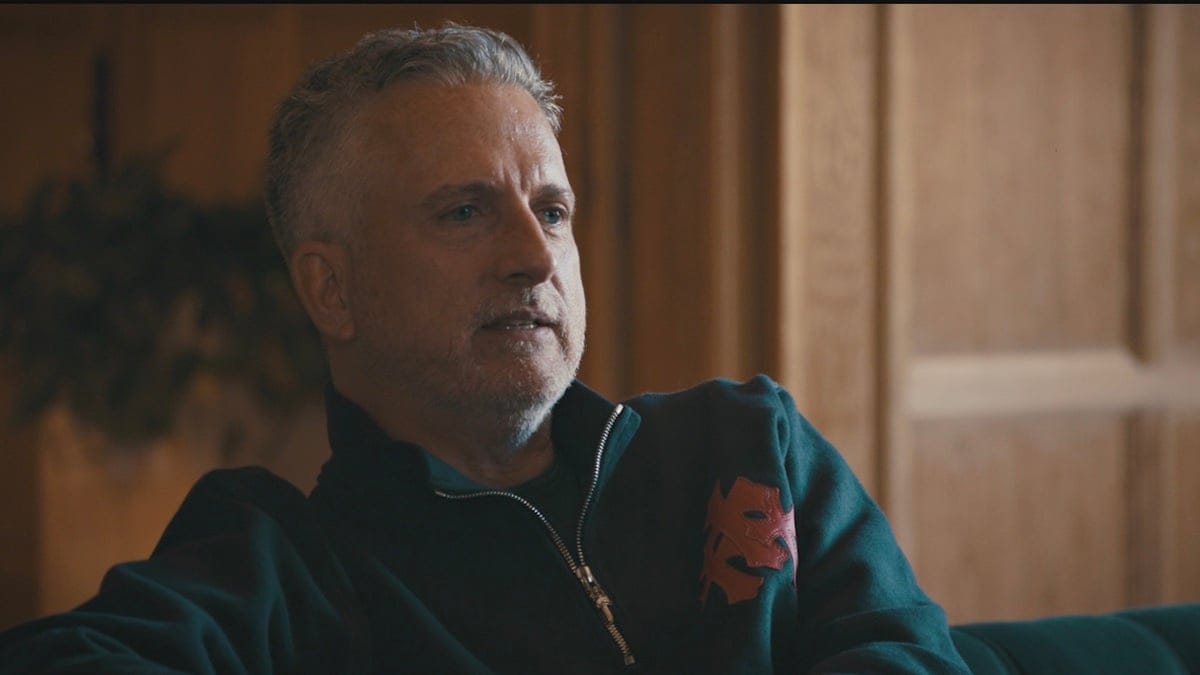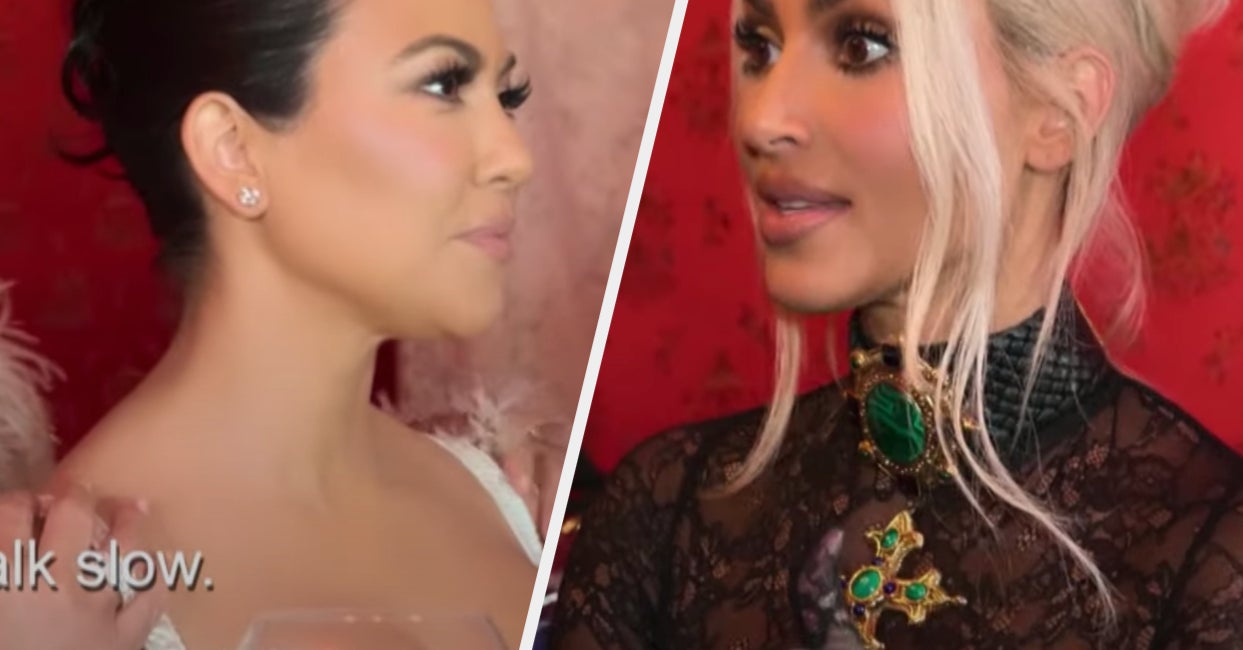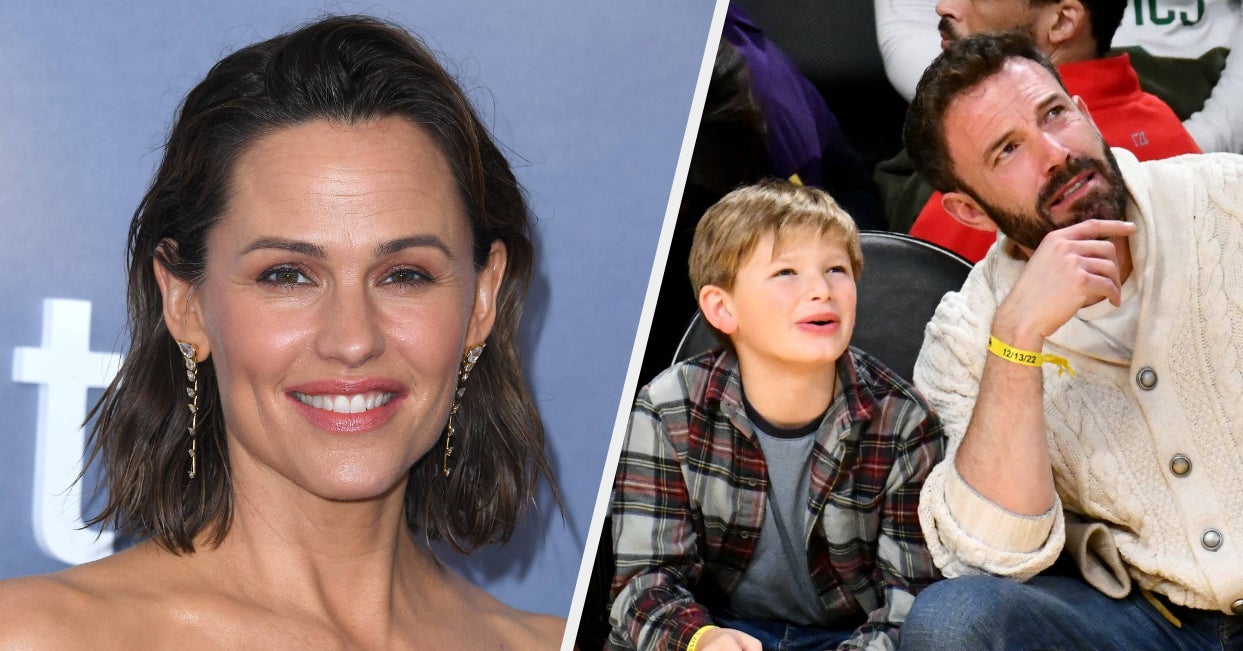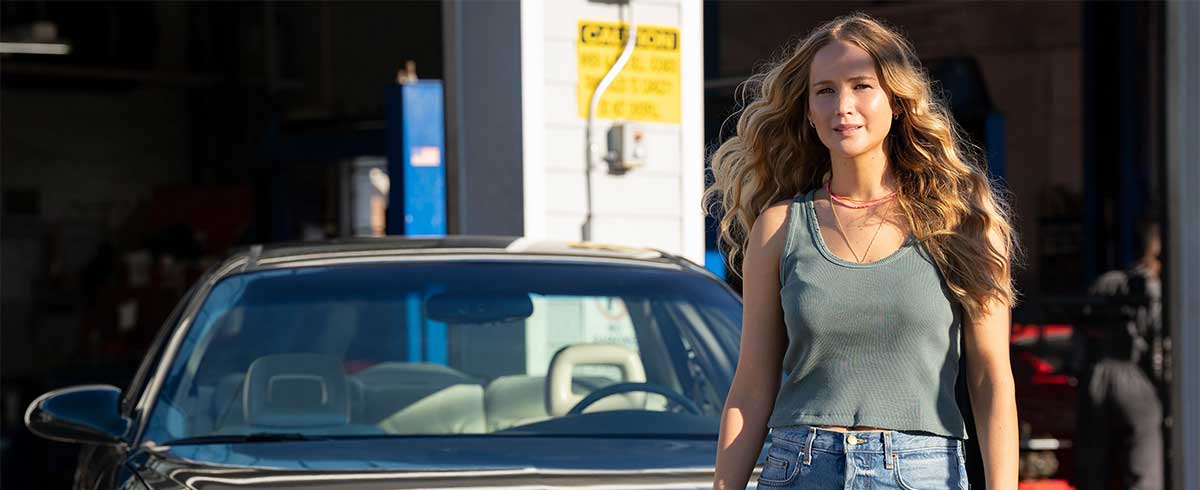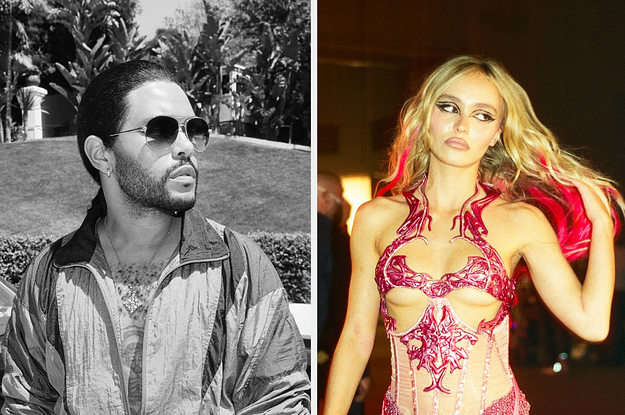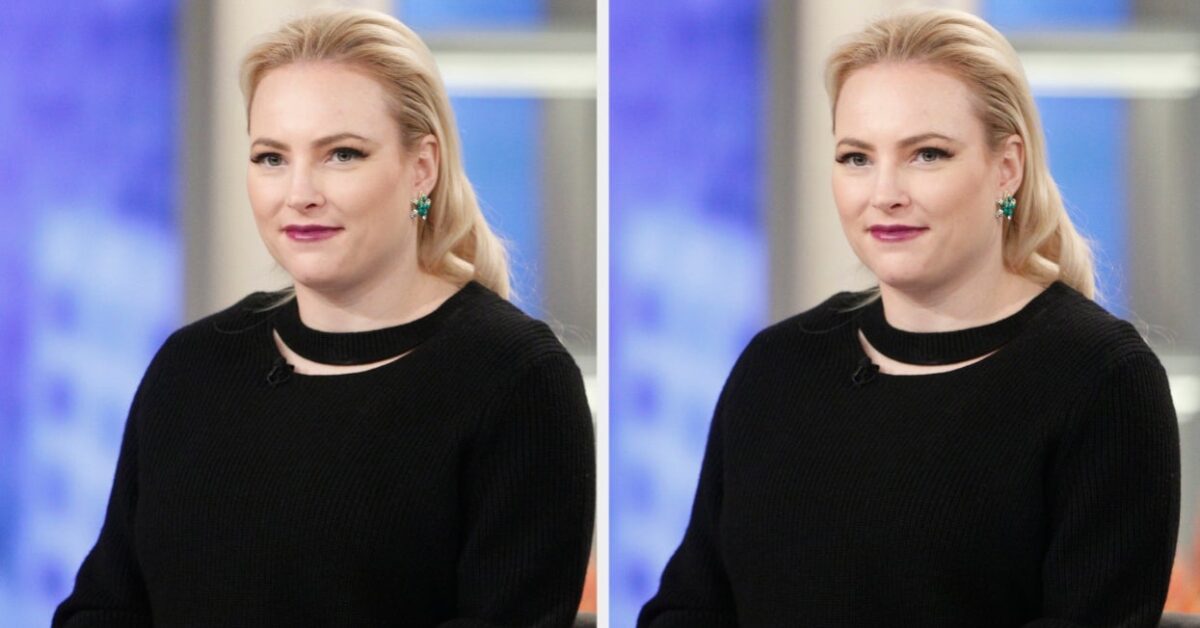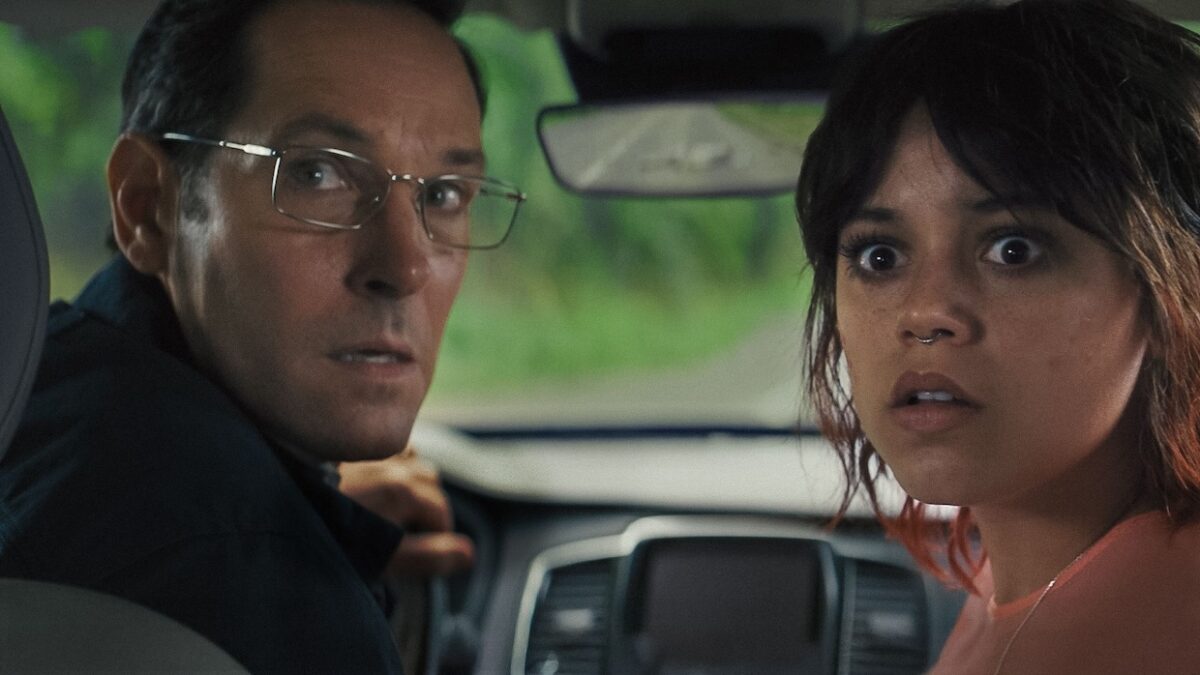
“I Didn’t Want to Have Complex Animatronics”: Alex Scharfman on Death of a Unicorn
Mar 31, 2025
Paul Rudd and Jenna Ortega in Death of a Unicorn
Death of a Unicorn, the feature debut by producer Alex Scharfman, could also be titled Death by Unicorn, as the film offers numerous stabbings via horn by the title creatures. The A24 production co-stars Paul Rudd and Jenna Ortega as a father and daughter who, on their way to visit an uber-rich pharmaceutical bigwig (Richard E. Grant) at his secluded compound in the woods, hit a unicorn with their car. The father and daughter load it up and plan to dispose of it later, but the mythical creature’s family comes looking for revenge, going on a murderous parental outrage.
“When we first read the script, we were blown away,” producer Lucas Joaquin, a longtime colleague who now runs production company Secret Engine with Scharfman and producer Drew Houpt, tells me. “Alex had mentioned the concept to us before, but nothing could prepare us for the ride he took us on during that first read. It was during high COVID, so it was a pure joy to read something so entertaining in those dark times. At Secret Engine the three of us truly share a brain [and] we have a shorthand in script development, in pre-production, on set and in post that allows us to cut through the noise and collaborate on ideas quickly and efficiently. There’s also a tremendous amount of trust between us: Alex knows that Drew and I will do everything we can and exhaust all the possibilities to achieve something that we’ve set out to do. It also helps that we make each other laugh a lot. with long hours in distant locations, the right vibe is an often overlooked key ingredient of a successful production.”
With Death of a Unicorn now in wide theatrical release, I spoke with Scharfman about his producing background, forming Secret Engine, researching unicorn lore, the inclusion of practical effects and more.
Filmmaker: When did you feel it was an opportune time to write and direct a feature? Was that always a personal goal of yours, or did it develop some years after you gained career footing in the world of producing?
Scharfman: I got into producing through writing. My first passion, ever since I was five or six years old, was to write short stories, and it continued throughout my teenage years before I began writing short films and features throughout college. When I graduated and began working on film sets, I stopped writing for a couple of years. After a while, I realized that I was missing a part of myself. Entering my mid-to-late twenties, I started it up again, primarily with feature film scripts, because that’s where I had wanted to focus most of my time. (I don’t know how one can make a living writing short stories.) Death of a Unicorn comes from an idea had a long time ago that I had begun developing with A24. They optioned the script almost five years ago—I had written it on spec prior to that—and, of course, everything takes a long time.
My intention initially wasn’t to direct—I was writing to be a screenwriter and a producer. I’d had other scripts in development getting cast up with various production companies, but a few years ago, I wrote a script that was the first where I’ve felt, “This feels idiosyncratic in such a way that I think I’m supposed to tell this story.” The main thing that ignited the desire to direct was just me thinking my writing was getting better. That [confidence] was probably paired with the reality that I was getting increasingly comfortable being on sets. The more time you spend on set, the more you’re producing and working with different directors. I had this gnawing sense of, “I think I’m supposed to be in that chair, not this one.” It was a natural progression.
Filmmaker: Given that unexpected path, did you find that when you picked writing back up, having now developed somewhat of a producer brain, your writing had improved? Were you more conscious of practical elements of production like, “This sequence might take a certain amount of days at minimum, we’re definitely going to need this number of locations,” etc. or does that consideration become limiting while you’re still in the writing process?
Scharfman: My producer perspective had definitely informed my writing, but after I wrote a few scripts, I was like, “I’m going to write one that isn’t influenced by that at all” and wrote a huge sci-fi movie set in the future with flying cars and shit [laughs]. It was a sci-fi version of Tom Sawyer and no one will ever get to make it because it’s a very weird story that would cost hundreds of millions of dollars. It wasn’t a “writing exercise” per se—you can’t be totally pragmatic—but it was something I was being conscious of. That script was valuable for me in pushing outside of the subconscious constraints of being a producer-minded person. Having worked in development on a lot of people’s scripts, has, I hope, also made me a better writer. I also think that being a writer, in turn, makes me better at developing other people’s scripts. It’s hard to delineate all of this. It’s all up there in one brain.
Filmmaker: Several names on Death of Unicorn also represent the spectrum of your history in producing and development. You began working with [producer] Lucas Joaquin and [producer] Lars Knudsen at Parts & Labor many years ago, and you, Lucas, and [producer] Drew Houpt, now run a production company, Secret Engine. How has it been important to your career in maintaining those relationships? I remember speaking with [director] Andrew Semans when his second feature, Resurrection, opened three years ago, about his film’s long development history and how each member of your team had a hand in getting that film made. The collaborators you’ve had for over a decade continue to be well-represented on each of your projects, including now on your feature debut.
Scharfman: In the summer of 2009 I became Lars’s intern at Parts & Labor. Lucas worked there as Lars’s assistant; Lars was, obviously, one of the principals of the company. I was in college and had just seen Kelly Reichardt’s Old Joy [produced by Parts & Labor], and thought, “Whoever made that, I’ve got to work [for them].” I had also seen that they were included in Variety’s Producers to Watch list [in 2008]. My mom lives in Brooklyn, and I was like, “Alright, where can I bike to for an internship?” Their office was in Williamsburg and I could bike there every day! It sounded perfect. They were working with Scott Rudin at the time (they had a personal deal with his company) and it was a great feeder system for accessing a lot of cool projects. I’ve now known Lars and Lucas since then and have been working with Drew for about a decade, first growing close in 2015 at the Sundance Producers Lab.
I went to film school at NYU, but working at Parts & Labor is where I learned how to make indie movies. Lars was a wonderful mentor and has executive-produced most of the movies [I’ve produced], continuing to give me advice and guidance. When Lars and Jay eventually ended their partnership at Parts & Labor (Lucas and I were full-time employees by then), Lucas and I started Secret Engine with Drew at the beginning of 2017. Lars, meanwhile, went off and produced Ari Aster’s first feature, Hereditary, and then created a production company, Square Peg, with him in 2019. We always kept in touch and continued working together, even producing films like Resurrection with Square Peg after the project [originated at Parts & Labor].
Filmmaker: I know you didn’t previously have a fascination or strong familiarity with the history of unicorn lore or mythology, which then begs the question: what made you want to explore them in the first place? I assume they come with a lot of daunting mythical baggage…
Scharfman: It started from a very organic place, with the story I had of a father and daughter who hit a unicorn with their car on the side of the road. I had no knowledge of unicorn mythology or lore or anything like that [prior to this idea]. A lot of times I’ve written scripts where I just come up with one image or idea or scene that I can’t get rid of. It just mentally repeats over and over again in my brain and I wonder, “Well, what’s the sticky thing there?” This led me to start wondering one day about unicorns. What’s the basis of unicorn mythology and lore? That question naturally led me to research a lot about the subject. The shocking thing I [discovered] was that unicorns used to be pretty violent—a kind of wild, untamable thing that, in earliest descriptions of their existence, were said to be known for violently defending themselves. You start digging in further and realize that they were representative of the untamed nature and purity of the natural world, which man (to our great shame) was perpetually trying to commoditize and capture. This basically goes as far back as you can in terms of learning about the history of unicorn mythology.
The other piece of their [lore] was they were typically prized as a panacea. Earlier accounts were centered around curing seizures and other specific pestilences and poisons, but eventually the [mythology] grew to them being considered a panacea that could cure anything, which is where our movie eventually takes it. As you learn more about unicorn mythology, you become aware of the idea of the manifestation of the natural world as an object or being that’s too pure for mankind. The unicorn takes on a Christ-like metaphor or allegory: “Man’s inherent corruption leads us to destroy this thing that is too good for us, and we’re not supposed to possess it because we are inherently flawed and sinful.”
The Bible also mentions unicorns, [describing them] as incredibly strong and ferocious. And while unicorns are featured, the Bible only added the word “unicorn” when the text was translated into English. The King James Bible has the word “unicorn” in it and there are a few other versions prior to that that include the word as well. The Hebrew word that it’s [originally derived] from was “re’em,” which translates to “wild ox,” which leads historians to believe that what was actually being described were “aurochs,” wild, roaming bull-like creatures that went extinct in the 1600s. There’s a certain kind of ancient old world God/deity element that we’re trying to tap into with unicorn mythology [in our film], but I think people used to, understandably, feel that if you ran into a wild bull in the woods that was eight feet tall at the shoulder, then you’d surely beg: “Please, whatever I can do. I supplicate myself before you, don’t kill me!” These animals used to be roaming the woods! These are the things humans used to have to contend with [laughs]. When you read the passages in the Bible that use the word “unicorn,” they’re always talking about them as these incredibly strong beasts that can tear things apart, and so when you think about it like, “They’re describing ‘aurochs,’ and they just changed it to ‘unicorn’ because in the Middle Ages, unicorns became symbols for Christ”—well, there’s a rich, deep history into how they’ve been [written about]. I did a lot of research just to have the basis for a well of reference materials. It’s fascinating when you start digging into it.
Filmmaker: The father and daughter are traveling to a mansion in the woods to meet a very rich family that, in the film’s press notes, you’ve described as being somewhat influenced by the infamous, Purdue Pharma-owning Sackler family and their history of artwashing. At what point did some of those real-life elements or concerns feel like an appropriate fit for a script with an already heightened premise?
Scharfman: The reason for doing all this research is to not be making shit up and to let the story tell you where it wants to go. This felt like a natural extension to say “OK, if unicorns are panaceas that we’re going to be placing in a contemporary context, then we’re going to be talking about healthcare and the pharmaceutical industry and medicine.” It would be hard not to discuss [those things] in relation to the [unicorns]. After all, that’s why they were prized. Likewise, when you start reading about The Hunt of the Unicorn or The Unicorn Tapestries or visit The Cloisters in Manhattan and learn about the seven tapestries that we reference in the film, much of it comes down to the commodification of nature—specifically, in the tapestries, about a lord sending his hunters out into the woods to find and kill so that he can then possess a unicorn. When you look at that today, it’s like, “well, isn’t this something of a class commentary?” That what’s happening there. It’d be hard for the story to not to be about those things when we’re viewing it as what an updated version of The Unicorn Tapestries could be.
Filmmaker: I was attempting to clock how many VFX shots are in the film as I watched it. How involved were you in pre-vis? Did you fight to include puppets or various prosthetics for certain close-ups when you could versus resorting to having to direct your actors to respond to something that’s not physically in-camera?
Scharfman: We basically storyboarded every shot with a unicorn in it, just because we needed to understand how we were going to execute each of them. In terms of the practical versus digital, and when to use each, we built really involved puppets for all of the creatures. The “full puppet” was [made to be] in a prone position where it could move and articulate in the scene where it was dying on the road. It could move its head and neck and even had a diaphragm built that would move up and down to show that it was breathing. We also had hero puppets [like hero props] for the stallion and the mare and had a stunt version of the mare we could ram through doors from time to time. We also had what we referred to as the “hand puppet” of the stallion’s jaws, a giant set of jaws that went up to its eye but didn’t go past that. We thought “okay, we need this puppet to be chomping right here or biting Paul [Rudd] on the shoulder for this [close-up],” so we can build a hand puppet. We used that a bunch.
When you’re shotlisting, you have to ask yourself, “What are the tools I have on the table here?” If we’re building so many puppets, how do I choose which to use for each moment? There’s one shot of Jenna [Ortega] where a CG [computer graphics] unicorn comes down the stairs and we rotate to a profile shot on her, then a hand puppet comes in and we rotate to a frontal position on her and the hand puppet is pulled out. While that hand puppet is coming out of the frame, three more puppeteers are shoving the hero puppet into her lap so that when we pull back with the camera, you’re seeing the hero puppet on her with some additional CG to extend the hero puppet so that it has a full body. There was a lot of stuff like that, where the hope was to marry the forms so that it’s as seamless as possible and the viewer doesn’t think about how it’s all happening.
I didn’t want to have complex animatronics, because when you have these little servos with fine motor movement, that’s when you’re asking for problems in terms of wire-spraying and shit breaking down. CG has come so far that you can now make a simple 2D animation and then transpose it onto a practical asset and have it come out looking really well. Some of my favorite shots in the movie are shots where we’re using a practical puppet and CG was later added in to emphasize a nose flare or a little tongue movement or a blink or an ear twitch, things like that. It’s the perfect marriage of these sorts of things. As much as possible, we always had puppets on set, even if we knew we were going to erase the puppet and place a digital creature in the frame later. I think that’s really important. It just changes the feeling for the actors and for me as a director composing a shot while knowing, “Here’s a puppet of the creature and eventually the creature is going to be right there.” The movie was intended to be a throwback to the creature features of the 1970s-90s, and that physical aspect was a big part of the films, something that is now a lost art.
Filmmaker: The film was conceived during COVID and then, when production was ready to kick off, delayed by the SAG-AFTRA strikes before your team obtained an interim agreement to move forward. Were there any things you couldn’t have anticipated or that surprised you by going through this process for the first time as a feature director?
Scharfman: I think being a producer for a number of years prepared me a lot for it, in terms of just knowing how I wanted to prep for a movie and how I wanted to communicate that prep to others.
Filmmaker: And you made your days, I’m sure.
Scharfman: Yeah, we made our days [laughs]. I took a lot of pride in the fact that our cast and crew had a positive experience on the film. It was very personally satisfying to hear people remark that it was one of their favorite production experiences, one of the best sets they’d ever been on. Maybe they’re just blowing smoke up my ass, but that was important to me, to always be communicating with the team.
I learned a ton about the feeling of hearing your dialogue said out loud by other people and not being overly precious about things. That was a very fortunate position to be in. Our actors would always make things sound better. I always encouraged that. It was an interesting lesson, of just how much work there is as a director, especially on a movie like this with all of the big creature [effects] and set construction. It was just a very involved movie. It’s a maximalist kind of movie and that was the intention: to take a big swing. If I’d known how much work it was going to be at the outset, maybe I wouldn’t have done it [laughs].
Publisher: Source link
McCain ‘Heartbroken’ Over Brain Cancer Research Cuts
There is no known cure for glioblastoma, though research has found ways to shrink the tumors and extend patients’ lifespans. McCain died just over a year after his diagnosis in 2017.Last month, the American Cancer Society Cancer Action Network (ACSCAN)…
Apr 5, 2025
Kate Spade Outlet: Sale Styles Over 70% Off, Get $69 Leather Bags
Our writers and editors independently determine what we cover and recommend. When you buy through our links, E! may earn a commission. Learn more. The Best Kate Spade Outlet Deals: Editor's Pick:... Disclaimer: This story is auto-aggregated by a computer program…
Apr 5, 2025
27 Celebrity Parents Who Spoil Their Kids Or Refuse To
27 Celebrity Parents Who Spoil Their Kids Or Refuse To Many parents value providing a better life for their kids than they had growing up. However, when those parents are rich and famous, it can be easy to indulge them.…
Apr 4, 2025
Bachelorette’s DeAnna Pappas Breaks Silence on Her Arrest
Jenn Tran & Devin StraderStatus: Split During the season 21 finale of The Bachelorette, it looked like The Bachelor alum Jenn Tran was finally getting her happy ending with her final pick Devin Strader. But Jenn, 26, revealed on…
Apr 4, 2025
